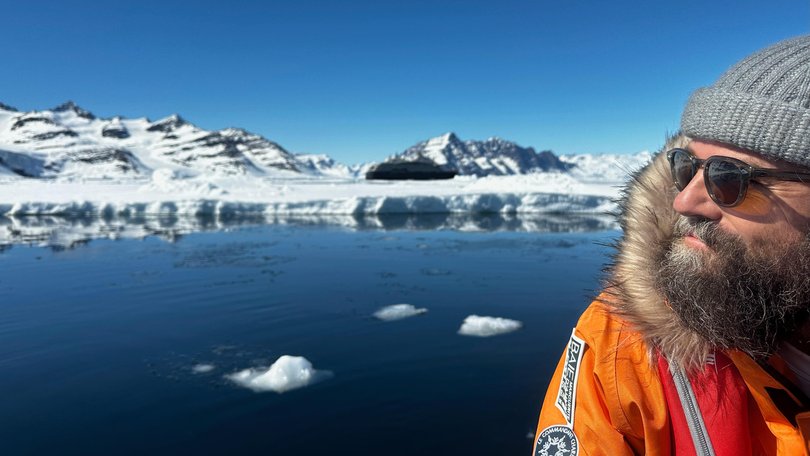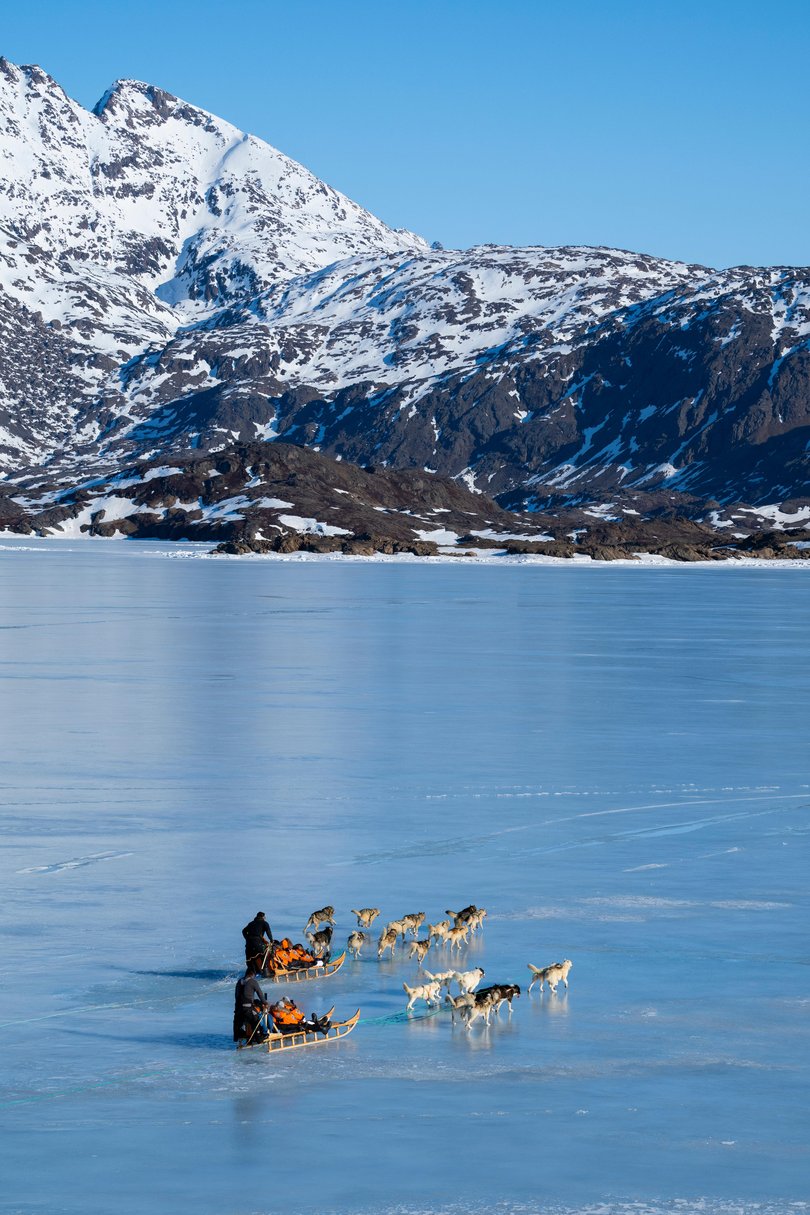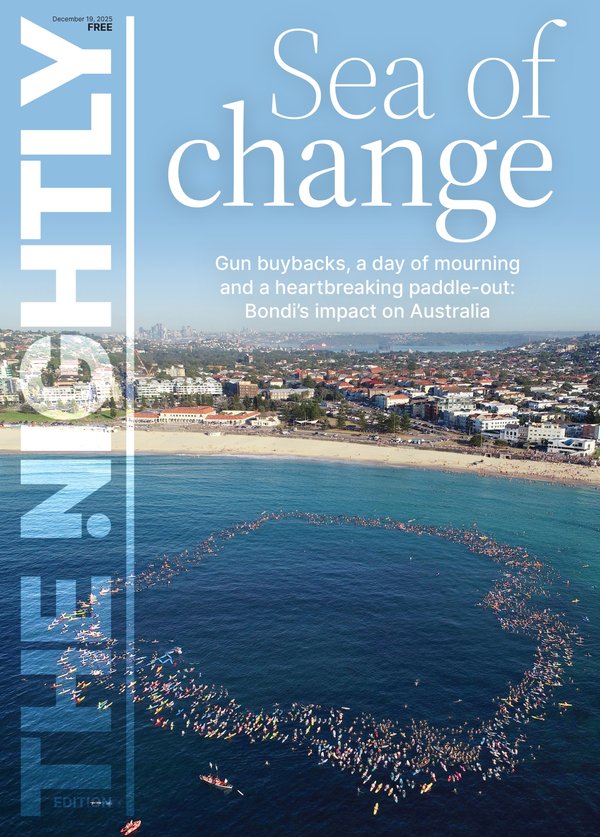Australian of the Year Sam Elsom: What happens when you sail the world’s only luxury icebreaker to Greenland

Seaweed is life for Sam Elsom.
The fashion-designer-turned-environmentalist has found global acclaim and rightful recognition for his Sea Forest organisation — which through research and trials now produces a seaweed-based livestock feed supplement to reduce methane emissions.
Named Tasmania’s 2025 Australian Of The Year, Elsom recently took his world view and climate knowledge to the Arctic — sailing the east coast of Greenland aboard the world’s only luxury icebreaker, Ponant’s Le Commandant Charot.
“We went as a family — my wife, Sheree, and two kids who were 14 and 12 at the time.
ROAM. Landing in your inbox weekly.
A digital-first travel magazine. Premium itineraries and adventures, practical information and exclusive offers for the discerning traveller.
By continuing you agree to our Terms and Privacy Policy.“I think they were happy to be stuck with me as the nature of my work means I’m away a lot. And even when I’m around, I’m on Zoom calls all the time. So it was nice to disconnect and be there and be learning together in the same environment.
“Being an environmentalist and working in the climate space, you hear a lot about the melting of the ice caps and these parts of the world being a window into the future when it comes to the rate of change we stand to face. And so I was incredibly excited to see that for myself. I was interested to understand more about that landscape. And I guess there was also a little trepidation, to be in that environment and see the impacts.
“There’s a safety briefing you take when you board Charcot — and it brings home just how remote you’re going to be. You leave Reykjavik and then, not long after that, you’re in the middle of nowhere. I might add that as we left Iceland we had humpback whales following the boat — it was an incredible scene.
“There’s a strange sound that comes with navigating your way through the ice — this grinding sound. You appreciate the force of nature and also the force of this incredibly engineered boat able to navigate and traverse this difficult terrain.
“The interesting thing about that time of the year (May) is that the sun never really sets — and so you’ve got this sort of sunset-type scenery across a sea of ice that almost looks like a desert. I remember one morning, it’s 2am and minus two degrees and I’m stood on the balcony of our room watching this scene unfold. It’s a feeling I’ll never forget — I recall thinking how wonderfully bizarre that this whole other world exists on the other side of the planet.
“I was also in awe of the silence. The silence in your surroundings and in the atmosphere with the exception of the ship you know, working its way through the sea ice. And there’s this sense of being disconnected in the silence as well. For me, it was as if the noise of the world, the noise of life, couldn’t touch you. I found it almost spiritual.

“For us that was the purpose of the trip too — for us to disconnect together.
“There’s a lot of a heaviness when it comes to climate and the changes that we face and I thought it was important for the kids to be able to have the experience and to learn — to put things in context and to learn as they are seeing things.
“I was so pleased to see their curiosity — they weren’t passive participants. You have different lectures every day on the ship — these opportunities to learn and hear from maybe local Inuits or the engineers who built the ship or the scientists doing Arctic research on board. And to see our kids sitting up in their chairs, their eyes wide open taking in everything and being fascinated and asking questions. It was something I hadn’t expected, but it was brilliant. I know they took so much from the trip.
“We saw polar bears. The first time they were off in the distance and you needed the most powerful binoculars to see them. And the next day we woke up and there was a polar bear kind of leaning on the ship. It had wandered over, curious about what was going on. And that was special. In principle we said yes to everything (kayaking, hiking, fishing, dog sledding]. I really wanted to immerse in the experiences as much as I could. And, you know, that involved signing up for some of the extreme hikes which we did near Tallisaq.
“You’re out there for four, five hours with ice picks climbing glaciers — it can be tough going at times but then I also learnt so much about myself, about the local Inuit community and their way of life, about the native fauna. I got to sample some Arctic seaweeds — a very cool thing for me.
“The waters out there can actually get to minus two or three degrees because of the salinity. And we did the polar plunge. You have to decide how you’re getting in — are you going to jump and put your head under, or, are you going to slowly immerse yourself into and step down into the water. Of course I jumped — it was an amazing feeling.
“The trip and the ship and everything you see is incredible. And then on top you’ve got these experiences and a chance to get out into the environment, and then you’ve got all the education and the science. I was curious about the work they’re doing and the data they’re collecting.
“Yeah, it was an incredible trip. Like being in a separate universe. It was very special and not something I’ll ever forget.”
seaforest.com.au; au.ponant
